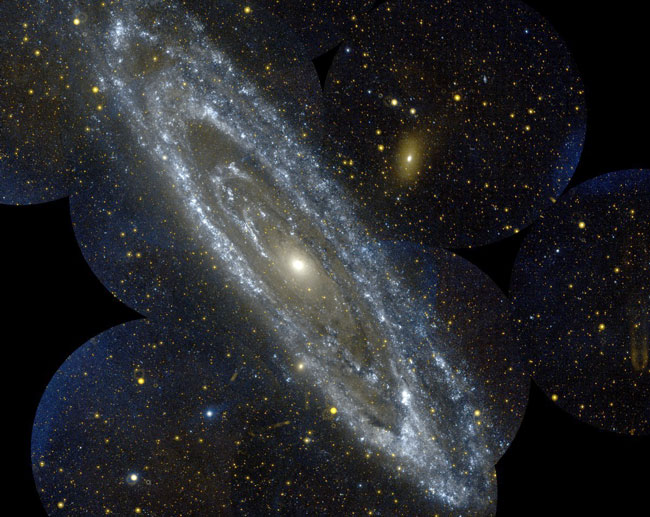To see most galaxies, you need at least a small telescope. But you can see the enormous Andromeda Galaxy, or Messier 31, with your own eyes; if you know where to look. The Andromeda Galaxy is located in the Andromeda constellation, and named after a princess in Greek mythology.
Andromeda is the largest galaxy in the Local Group, which includes the Milky Way, the Triangulum Galaxy, and dozens of smaller dwarf and irregular galaxies. A recent estimate gave Andromeda 700 billion solar masses. Our Milky Way is only 80% the mass of Andromeda.
The Andromeda galaxy was first observed by Persian astronomers, thousands of years ago, and was later cataloged by Charles Messier in 1764. He classified it as M31. In 1912, astronomers calculated its speed to be 300 kilometers per second, moving towards the Sun. Edwin Hubble first calculated the distance to Andromeda, by detecting cepheid variables in the galaxy. He measured that it was 450 kpc, or 2.5 million light-years away; well outside the Milky Way galaxy.
Recent estimates have calculated that Andromeda Galaxy is about 220,000 light-years in diameter, almost twice the estimate diameter of the Milky Way.
While other galaxies are moving away from us, Andromeda is on a collision course with the Milky Way. Our two galaxies will collide with one another in about 2.5 billion years, and begin forming a giant elliptical galaxy. It’s known to have 14 dwarf galaxies orbiting it in various stages of merger.
We have written many articles about Andromeda Galaxy for Universe Today. Here’s an article about the constellation Andromeda, which contains the Andromeda Galaxy, and here’s a beautiful picture of Andromeda captured by Spitzer.
If you’d like more info on galaxies, check out Hubblesite’s News Releases on Galaxies, and here’s NASA’s Science Page on Galaxies.
We have also recorded an episode of Astronomy Cast about galaxies – Episode 97: Galaxies.

